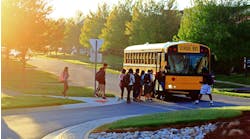Download this article in PDF format.
The airline industry is working toward fully autonomous aircraft with a focus on improving the overall safety of flight operations. Using artificial intelligence, machine learning, sensors and other advanced technologies, companies are developing new ways to autonomously handle flight tasks from the time an engine starts until the time it shuts down.
In late November, one aircraft automation developer hit a new milestone when a Cessna 208B Caravan flew its first-ever FAA-approved uncrewed test flight. Using Reliable Robotics’ technology and under the supervision of a remote pilot working from a control center 50 miles away, the cargo aircraft successfully flew from point A to point B with no one onboard.
Up, Up and Away
Reliable Robotics’ autonomous flight system allows aircraft to be remotely operated by a pilot on the ground and improves safety by fully automating the aircraft through all phases of operation, including taxi, takeoff and landing. The “aircraft agnostic” system uses multiple layers of redundancy and advanced navigation technology to achieve the levels of integrity and reliability necessary for uncrewed flight.
According to the company, the system will prevent controlled flight into terrain (CFIT) and loss of control in flight (LOC-I), which account for the majority of fatal aviation accidents. The FAA formally accepted the certification plan for Reliable’s autonomous flight system in June of 2023. The certification plan leverages existing regulations for normal and transport category aircraft, and does not require any special conditions or exemptions.
Textron Aviation Inc. designed and manufactured the Cessna Caravan. “Textron Aviation is committed to delivering continuous aviation improvements and our relationship with Reliable Robotics advances this work,” said Chris Hearne, Textron’s SVP of Engineering and Programs, in a press release. “Reliable’s successful flight of an uncrewed Cessna 208 Caravan represents a milestone for the industry in bringing new technology to aviation.”
Uncrewed Aerial Systems
Reliable Robotics’ CEO Robert Rose told Aviation International News (AIN) that the FAA granted Reliable Robotics a special airworthiness certificate permitting it to fly the experimental uncrewed aerial system (UAS) for research and development purposes with some limitations. “The company was required to file a notice to air missions (notam) and fly within a specified boundary that was within the visual line of sight (VLOS) of observers on the ground,” AIN reports.
Reliable Robotics’ ultimate goal is to develop an autonomous flight control system that will support uncrewed cargo flights. “The first iteration of this technology that the company plans to commercialize will be an advanced autopilot system for single-pilot operations in crewed aircraft,” AIN says, “which is meant to supplement rather than replace onboard pilots.”
With a useful load of over 3,000 lb, and a take-off performance to operate from shorter runways, these Cessnas can be used to deliver time-sensitive shipments to places that would otherwise not have next-day or same-day service. The company says remote piloting will also allow even more areas to benefit from this service.
What’s Coming Next?
According to FreightWaves, aviation experts expect advanced automation to initially be adopted at scale in the cargo sector, starting with small freighter aircraft and eventually transitioning to larger aircraft.
“Companies such as Reliable Robotics, Xwing and Merlin are building independent software stacks that can be integrated into Cessna flight control systems to allow regional cargo aircraft to take off, maneuver and land without human involvement,” the publication reports. “Remote piloting, which is a step toward autonomous flight systems, will allow more communities to benefit from air service, especially with pilots in short supply.”
Reliable’s autopilot system automates all phases of flight, from taxi to takeoff and landing, according to FreightWaves. “It uses redundant hardware and software to automate flight control surfaces and engine controls, as well as redundant voice and data networks for secure air-to-ground connectivity, which enables remote aircraft command and radio management.”









